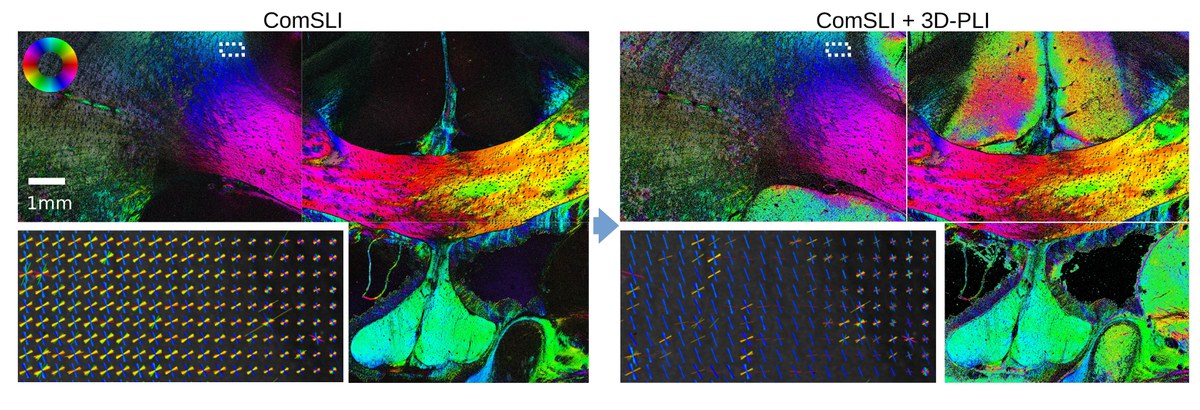25 June 2025
In order to understand the structure and functioning of the brain, neuroscientists need to study the complex, three-dimensional pathways and connections of nerve fibers. The intersection of multiple nerve fibers poses a particular challenge for neuroimaging. Until now, two methods - 3D-PLI and ComSLI - have been used separately. Researches from Jülich and Delft have developed a system that combines both methods to great advantage. They present their "Scattering Polarimeter" in a recent study in the journal Scientific Reports.

Advantages of the combination
3D Polarized Light Imaging (3D-PLI) makes it possible to visualize the course of nerve fibers in entire histological brain sections with a resolution in the micrometer range using visible light. However, the method leaves uncertainties in pixels that contain intersecting nerve fibers. This problem can be solved with the help of Computational Scattered Light Imaging (ComSLI): The same brain slices are illuminated (now automated) from different angles and the transmitted (scattered) light is measured under normal incidence. This produces light intensity profiles that reveal the underlying brain tissue structure and thus the crossing of nerve fibers. A combination of both methods in a single device would offer decisive advantages: faster measurements, pixel-by-pixel mapping and cross-validation of fiber courses.
The Scattering Polarimeter, potential applications and JUPITER
To this end, the researchers developed the "Scattering Polarimeter" based on the so-called Mueller polarimeter: a microscope that enables simultaneous 3D-PLI and ComSLI measurements during large-scale brain scans. Initial studies of brain slices from different species using the Scattering Polarimeter have already shown results comparable in quality to the individual measurements of 3D-PLI and ComSLI, and can be used for high-precision multimodal maps of nerve fiber tracts. The scientists now see good opportunities for the micrometer-precise reconstruction of neural networks of the human brain. The capacities of the new Jülich exascale computer JUPITER will also be used for this purpose.
Original publication:
Auf der Heiden F, Axer M, Amunts K, Menzel M. Scattering polarimetry enables correlative nerve fiber imaging and multimodal analysis. Sci Rep. 2025 May 27;15(1):18493. DOI: 10.1038/s41598-025-02762-w.






